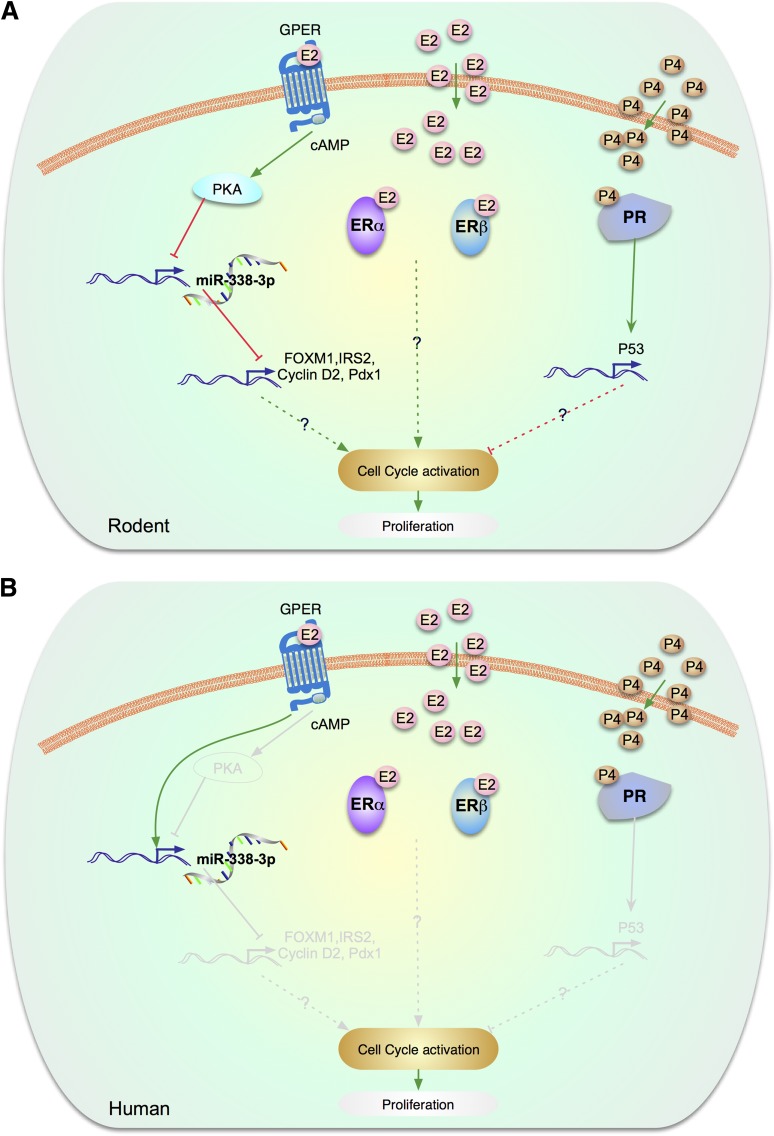Figure 4.
Estrogen/progesterone signaling pathways involved in proliferation. A: In rodent β-cells, GPER has been implicated in β-cell proliferation during pregnancy. In rodents, GPER expression is upregulated during pregnancy, which leads to a decrease in the expression of the islet microRNA, miR-338–3p, leading to increased mRNA expression of IRS-2, Pdx1, FOXM1, and cyclin D2 and stimulation of β-cell proliferation. These effects of E2/GPER are cAMP- and PKA-dependent. E2 has also been reported to increase β-cell proliferation in ovariectomized rodents with subtotal pancreatectomy. This effect was associated with an increase in the expression of IRS-2 and PDX1 proteins. B: Human β-cells. The gray lines are molecules and pathways that are known to exist in rodents but are unknown in human β-cells. The human β-cell signaling road map is underdeveloped. Although FOXM1, IRS-2, cyclin D2, PDX-1 are known to be present in human β-cell, their involvement in estrogen signaling has not been studied. Exposure to E2 reduces the level of miR-338–3p in human islet cells. However, neither E2 nor silencing of miR-338–3p elicited replication of cultured human β-cells. In addition, progesterone signaling has not been studied in human β-cells.

